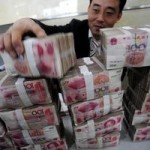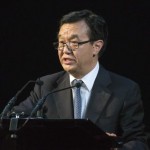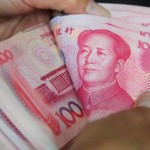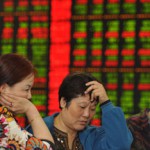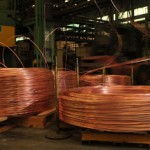A profound change for China’s SOEs
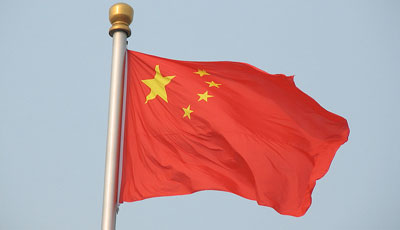
The rapid rise of China’s outbound direct investment in the past decade is a significant economic phenomenon, one met with a lot of resistance in some destination countries, particularly due to the abundance of state-owned enterprises. But despite concerns over SOEs’ motivations and political connections, the recent round of SOE reform brings good prospects for further Chinese ODI.
According to China’s Ministry of Commerce, in 2014 Chinese companies invested $US116 billion in 156 countries — about 45 times more than in 2002. The country ranks first among developing countries in both ODI stock and flow. And there is vast potential for additional ODI growth.
In 2014, China’s GDP per capita reached $US7485. At this time, China became a net exporter of direct investment. It is estimated that China’s ODI will increase at the annual compound growth rate of 19-22 per cent in the decade from 2013. This would make the total increased volume of China’s ODI during 2013-20 between $US2.5 trillion and $US3.6 trillion.
But the rapid growth of China’s ODI has led to concern in some host destinations. These concerns come from not only the media and the general public, but also governments, scholars and other analysts.
A leading concern is the high share of China’s ODI by Chinese SOEs. Chinese ODI is in fact dominated by SOEs, especially before 2009. According to our calculations, between 2005 and 2013, 89.4 per cent of the $US807.5 billion of Chinese ODI and contracts were linked to SOEs.
Among the concerns of ODI recipient countries is that SOE ODI is driven by the Chinese government, with political and state-based strategic considerations rather than commercial ones. That generates fear that SOE investment is potentially harmful to the national interest of destination countries.
In response to such concerns, the overseas regulatory environment confronting China’s ODI is getting tougher, especially towards SOEs. The United States passed the Foreign Investment and National Security Act in 2007. Australia and Canada also issued new foreign investment guidelines in 2008 and 2009 respectively. All have made SOEs’ investments in their domestic markets more difficult.
But the concern from developed countries fails to reflect a key feature of Chinese SOEs. In the past 30 years, SOEs have undergone a series of reforms. In the early-1980s, Chinese SOEs were directly attached to and operated by government bodies. Subsequent reforms, stretching into the 1990s, were carried out to separate the government’s ownership from management’s operating role. And in the 2000s, nine government bodies engaged in managing SOEs were abolished.
In 2003, the Chinese government established the State-Owned Assets Supervision and Administration Commission. Unlike former regulators, SASAC enjoys consolidated powers over SOE regulation. There has been a massive shift from fragmented to concentrated regulatory power.
In 2006, SASAC issued some guiding opinions on SOE capital investments, mergers and acquisitions. The opinions made it clear that if central SOEs did not rank among the top three of their industry, they would be merged and acquired. The goal then was to reduce the number of central SOEs from 155 to between 80 and 100. In 2014, there were 112 central SOE groups.
SOEs are clearly connected closely with the government and politics. But this does not necessarily mean that SOEs’ behaviour reflects their owners’ policy purposes. Since the market-oriented reforms were introduced in 1978, the regulatory regime has been changing dramatically. The main trend is towards consolidating what were decentralised regulatory powers. There has been incremental transition from a separated regime to an integrated regime.
With this transition, SOE regulators have had stronger incentives to promote ODI. SOE investments have increased dramatically since the establishment of SASAC in 2003. But this may also have coincided with an increase in collusive behaviour, which can lead to an increase in the volume of low-quality ODI. While this would contribute to SOE ODI growth, it would lower the efficiency of Chinese ODI as a whole.
China’s SOE ODI is also negatively influenced by the political environment. China’s corruption problem is severe. In 2014, China ranked 100th among 175 countries on the Transparency International’s Corruption Perceptions Index. Corruption can lead to low-quality investment — domestically and internationally — and so imposes a cost on the SOE owner and the Chinese economy.
Since 2013, Chinese President Xi Jinping has overseen a high-profile anticorruption campaign. This has targeted hundreds of thousands of officials at all levels of government and in the state-owned sector. As of 2015, it had executed over 270,000 cases involving officials from all levels of government. The scale of the campaign has had several consequences for China’s SOE ODI. While slowing SOE ODI growth, it ultimately enhances its efficiency by discouraging collusion.
In 2013, the Chinese Communist Party announced a new set of reforms, including SOE reforms. These include developing a mixed-ownership economy, improving the state-owned asset management system, improving SOE governance and management systems, and strengthening the budget system for state-owned capital operation.
Several differences can be identified between this new round of SOE reform and previous ones. Mixed ownership is now considered the basic form of the socialist economic system. As a result, the majority of SOEs can now become mixed-ownership entities. Private capital is also encouraged to take controlling shares, and employees will be permitted to hold stocks.
The SOE reforms, as difficult and complicated as they are, will bring profound changes to the Chinese economy, as well as to Chinese enterprises and their overseas investments. As the SOE reforms evolve, so should the world’s views on them.
Mei Lisa Wang is Deputy Director of the National Economy Research Institute (NERI) in Beijing.
Zhen Qi is a PhD student at the Graduate School of the Chinese Academy of Social Sciences (CASS) and the Crawford School of Public Policy, ANU.
Jijing Zhang is Vice President of CITIC.
This article is a digest of the authors’ chapter in the 2015 edition of the China Update book series: China’s domestic transformation in a global context (ANU Press).
This article was first published at East Asia Forum. Reproduced with permission.
Source: Business Spectator – A profound change for China’s SOEs









